2217-02-9
| 中文名 | 小茴香醇 |
|---|---|
| 英文名 | (1S,3R,4R)-2,2,4-trimethylbicyclo[2.2.1]heptan-3-ol |
| 中文别名 |
(1R)-endo-(+)-葑基醇
(1R)-1,3,3-三甲基双环[2.2.1]庚-2-醇 (+)-葑醇 (+)-葑基醇 |
| 英文别名 |
EINECS 216-639-5
1,3,3-trimethyl-2-norbornanol MFCD00003760 (+)-Fenchol |
| 密度 | 0.992g/cm3 |
|---|---|
| 沸点 | 201ºC |
| 熔点 | 39-45ºC |
| 分子式 | C10H18O |
| 分子量 | 154.24900 |
| 闪点 | 165 °F |
| 精确质量 | 154.13600 |
| PSA | 20.23000 |
| LogP | 2.19350 |
| 蒸汽压 | 0.0693mmHg at 25°C |
| 折射率 | 1.502 |
| 储存条件 | 保持容器密封,放入紧密的出藏器内,储存在阴凉,干燥的地方 |
| 稳定性 | 避免氧化物接触 |
| 分子结构 | 1、 摩尔折射率:45.85 2、 摩尔体积(m3/mol):155.3 3、 等张比容(90.2K):381.2 4、 表面张力(dyne/cm):36.2 5、 极化率(10 -24cm 3):18.17 |
| 计算化学 | 1、 疏水参数计算参考值(XlogP):2.5 2、 氢键供体数量:1 3、 氢键受体数量:1 4、 可旋转化学键数量:0 5、 互变异构体数量: 6、 拓扑分子极性表面积(TPSA):20.2 7、 重原子数量:11 8、 表面电荷:0 9、 复杂度:185 10、同位素原子数量:0 11、确定原子立构中心数量:3 12、不确定原子立构中心数量:0 13、确定化学键立构中心数量:0 14、不确定化学键立构中心数量:0 15、共价键单元数量:1 |
| 更多 | 1. 性状:无色固体 2. 密度(g/mL,20ºC):未确定 3. 相对蒸汽密度(g/mL,空气=1):未确定 4. 熔点(ºC):39-43 5. 沸点(ºC,常压):201-202 6. 沸点(ºC,21mmHg):未确定 7. 折射率(nD20):未确定 8. 闪点(ºF):165 9. 比旋光度():未确定 10. 自燃点或引燃温度(ºC):未确定 11. 蒸气压(Pa,25ºC):未确定 12. 饱和蒸气压(kPa,20ºC):未确定 13. 燃烧热(KJ/mol):未确定 14. 临界温度(ºC):未确定 15. 临界压力(KPa):未确定 16. 油水(辛醇/水)分配系数的对数值:未确定 17. 爆炸上限(%,V/V):未确定 18. 爆炸下限(%,V/V):未确定 19. 溶解性:未确定 |
Synonym:1,3,3-Trimethyl-2-norbornano Section 2 - COMPOSITION, INFORMATION ON INGREDIENTS
Risk Phrases: None Listed. Section 3 - HAZARDS IDENTIFICATION EMERGENCY OVERVIEW
The toxicological properties of this material have not been fully investigated. Potential Health Effects Eye: May cause eye irritation. Skin: May cause skin irritation. Ingestion: May cause irritation of the digestive tract. Inhalation: May cause respiratory tract irritation. Chronic: No information found. Section 4 - FIRST AID MEASURES Eyes: Flush eyes with plenty of water for at least 15 minutes, occasionally lifting the upper and lower eyelids. Get medical aid immediately. Skin: Get medical aid. Flush skin with plenty of water for at least 15 minutes while removing contaminated clothing and shoes. Wash clothing before reuse. Ingestion: If victim is conscious and alert, give 2-4 cupfuls of milk or water. Never give anything by mouth to an unconscious person. Get medical aid immediately. Inhalation: Remove from exposure and move to fresh air immediately. If not breathing, give artificial respiration. If breathing is difficult, give oxygen. Get medical aid. Notes to Physician: Section 5 - FIRE FIGHTING MEASURES General Information: As in any fire, wear a self-contained breathing apparatus in pressure-demand, MSHA/NIOSH (approved or equivalent), and full protective gear. During a fire, irritating and highly toxic gases may be generated by thermal decomposition or combustion. Use water spray to keep fire-exposed containers cool. Containers may explode when heated. Extinguishing Media: In case of fire, use water, dry chemical, chemical foam, or alcohol-resistant foam. Use water spray to cool fire-exposed containers. Section 6 - ACCIDENTAL RELEASE MEASURES General Information: Use proper personal protective equipment as indicated in Section 8. Spills/Leaks: Clean up spills immediately, observing precautions in the Protective Equipment section. Sweep up, then place into a suitable container for disposal. Avoid generating dusty conditions. Remove all sources of ignition. Provide ventilation. Section 7 - HANDLING and STORAGE Handling: Wash thoroughly after handling. Remove contaminated clothing and wash before reuse. Use only in a well-ventilated area. Avoid contact with eyes, skin, and clothing. Empty containers retain product residue, (liquid and/or vapor), and can be dangerous. Keep container tightly closed. Keep away from heat, sparks and flame. Avoid ingestion and inhalation. Do not pressurize, cut, weld, braze, solder, drill, grind, or expose empty containers to heat, sparks or open flames. Storage: Keep away from heat, sparks, and flame. Keep away from sources of ignition. Store in a tightly closed container. Store in a cool, dry, well-ventilated area away from incompatible substances. Section 8 - EXPOSURE CONTROLS, PERSONAL PROTECTION Engineering Controls: Facilities storing or utilizing this material should be equipped with an eyewash facility and a safety shower. Use adequate ventilation to keep airborne concentrations low. Exposure Limits CAS# 2217-02-9: Personal Protective Equipment Eyes: Wear appropriate protective eyeglasses or chemical safety goggles as described by OSHA's eye and face protection regulations in 29 CFR 1910.133 or European Standard EN166. Skin: Wear appropriate protective gloves to prevent skin exposure. Clothing: Wear appropriate protective clothing to prevent skin exposure. Respirators: A respiratory protection program that meets OSHA's 29 CFR 1910.134 and ANSI Z88.2 requirements or European Standard EN 149 must be followed whenever workplace conditions warrant respirator use. Section 9 - PHYSICAL AND CHEMICAL PROPERTIES Physical State: Crystals Color: Colorless Crystals Odor: None reported. pH: Not available. Vapor Pressure: Not available. Viscosity: Not available. Boiling Point: 201 deg C @ 760.00mmHg Freezing/Melting Point: 39.00 - 45.00 deg C Autoignition Temperature: Not available. Flash Point: 73 deg C ( 163.40 deg F) Explosion Limits, lower: Not available. Explosion Limits, upper: Not available. Decomposition Temperature: Solubility in water: Specific Gravity/Density: Molecular Formula: C10H18O Molecular Weight: 154.25 Section 10 - STABILITY AND REACTIVITY Chemical Stability: Stable under normal temperatures and pressures. Conditions to Avoid: Incompatible materials, ignition sources, dust generation, excess heat, strong oxidants. Incompatibilities with Other Materials: Strong oxidizing agents, strong reducing agents, strong acids, acid chlorides, acid anhydrides. Hazardous Decomposition Products: Carbon monoxide, carbon dioxide. Hazardous Polymerization: Has not been reported. Section 11 - TOXICOLOGICAL INFORMATION RTECS#: CAS# 2217-02-9 unlisted. LD50/LC50: Not available. Carcinogenicity: (1R)-endo-(+)-Fenchol - Not listed by ACGIH, IARC, or NTP. Section 12 - ECOLOGICAL INFORMATION Section 13 - DISPOSAL CONSIDERATIONS Dispose of in a manner consistent with federal, state, and local regulations. Section 14 - TRANSPORT INFORMATION IATA Not regulated as a hazardous material. IMO Not regulated as a hazardous material. RID/ADR Not regulated as a hazardous material. Section 15 - REGULATORY INFORMATION European/International Regulations European Labeling in Accordance with EC Directives Hazard Symbols: Not available. Risk Phrases: Safety Phrases: S 24/25 Avoid contact with skin and eyes. WGK (Water Danger/Protection) CAS# 2217-02-9: No information available. Canada None of the chemicals in this product are listed on the DSL/NDSL list. CAS# 2217-02-9 is not listed on Canada's Ingredient Disclosure List. US FEDERAL TSCA CAS# 2217-02-9 is not listed on the TSCA inventory. It is for research and development use only. SECTION 16 - ADDITIONAL INFORMATION N/A |
|
生态学数据: 对水是稍微有害的,不要让未稀释或大量的产品接触地下水,水道或者污水系统,若无政府许可,勿将材料排入周围环境
|
| 个人防护装备 | Eyeshields;Gloves;type N95 (US);type P1 (EN143) respirator filter |
|---|---|
| 风险声明 (欧洲) | 36/38 |
| 安全声明 (欧洲) | S22-S24/25 |
| 危险品运输编码 | UN 1325 4.1/PG 2 |
| WGK德国 | 3 |
| 上游产品 0 | |
|---|---|
| 下游产品 5 | |

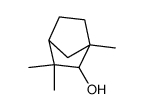
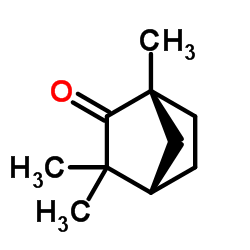
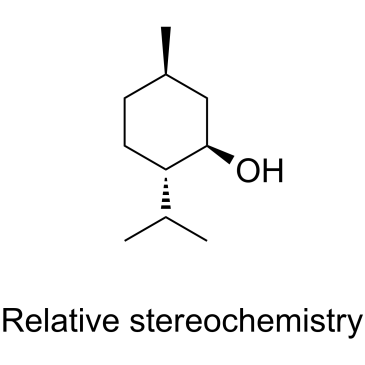
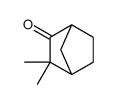
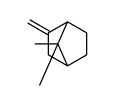
![7,7-DIMETHYLBICYCLO[2.2.1] HEPTANE-2,3-DIONE结构式](https://image.chemsrc.com/caspic/258/4183-87-3.png)